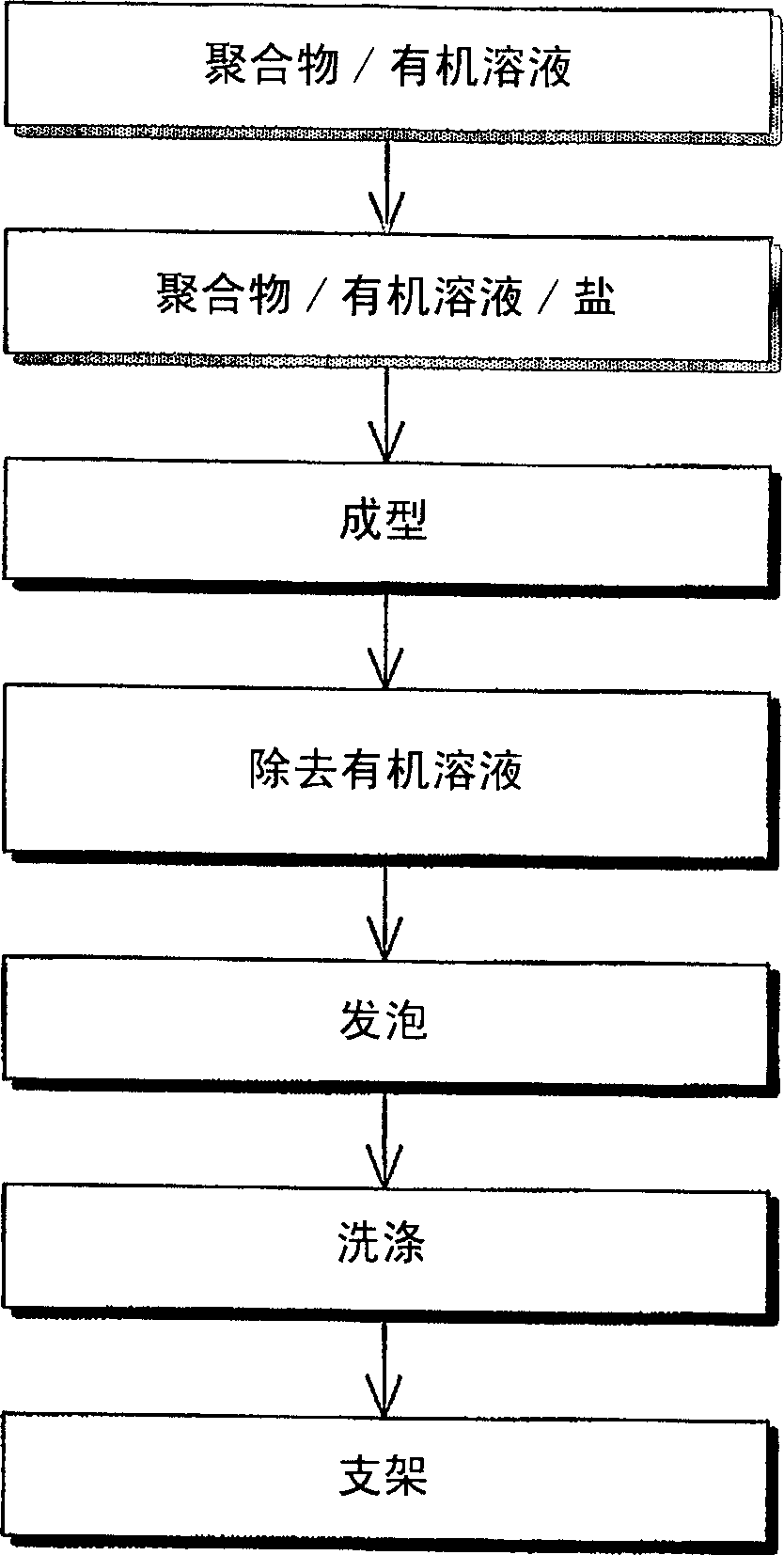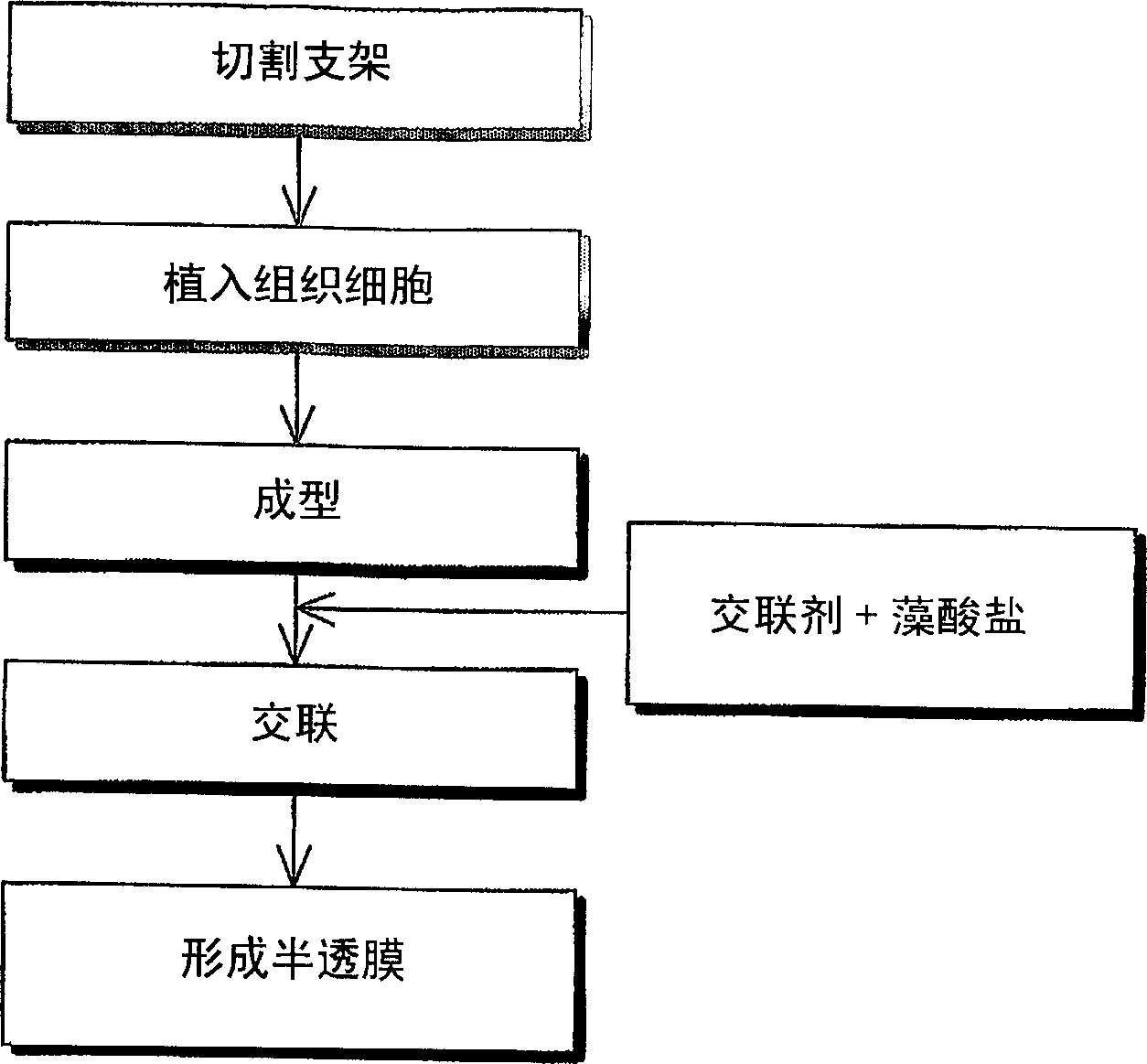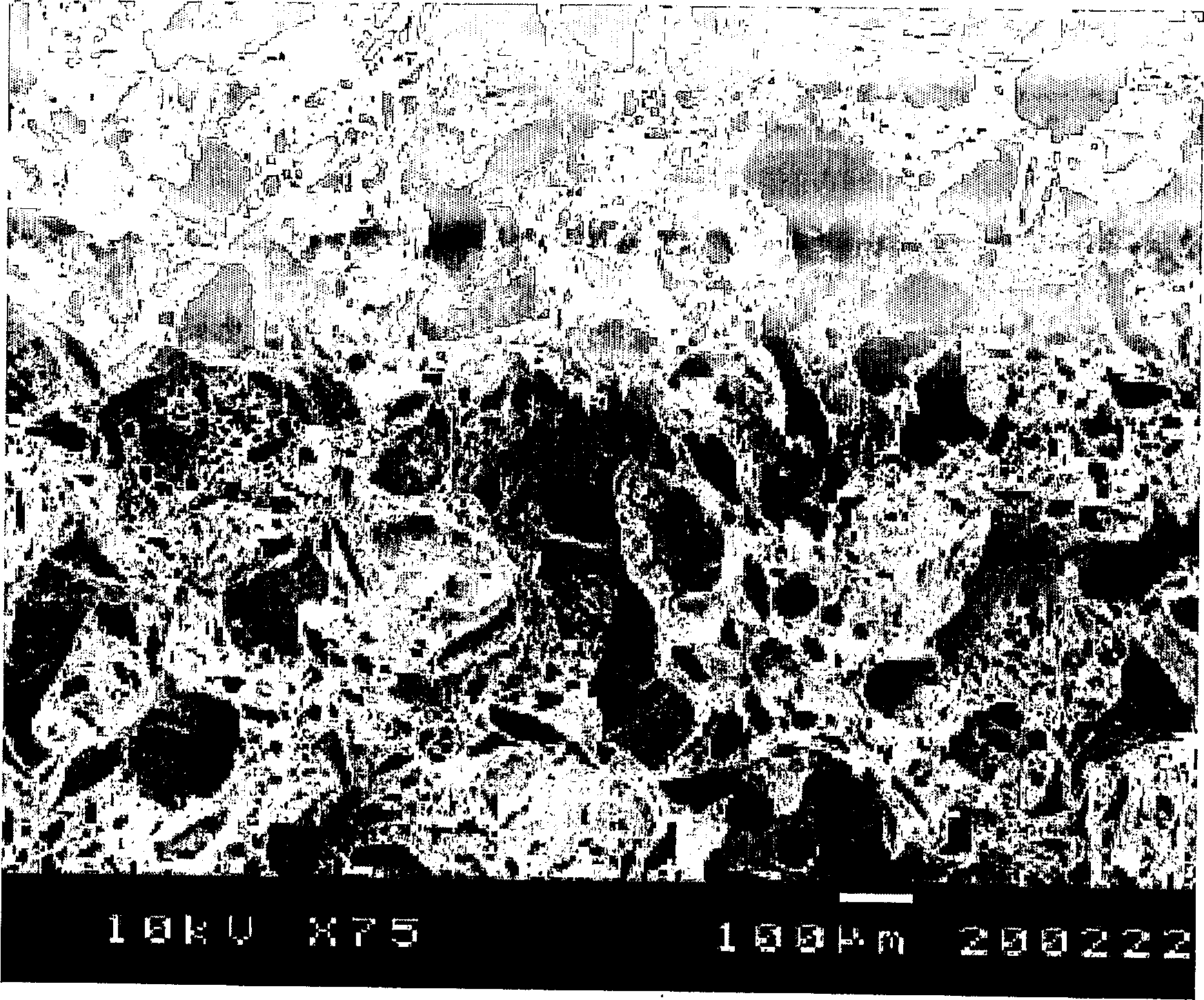Biodegradable dual porous scaffold wrapped with semi-permeable membrane and tissue cell culture using thereof
A technology for organizing cells and biological tissues, applied in the field of scaffolds, can solve the problems of slats, insufficient cell nutrition, and difficulty for cells to grow into the scaffold, etc.
- Summary
- Abstract
- Description
- Claims
- Application Information
AI Technical Summary
Problems solved by technology
Method used
Image
Examples
Embodiment 1
[0084] Embodiment 1: manufacture support
[0085] A mixed solvent was prepared by mixing 90% methylene chloride (Ducksan Chemical Co. Ltd., Korea) and 10% dimethyl sulfoxide (Sigma, USA). PLGA accounting for 10 wt% of the mixed solvent was dissolved in the mixed solvent, wherein PLGA was composed of lactic acid (Sigma, USA) and glycolic acid (Sigma, USA) in a ratio of 75:25, and the molecular weight was 90,000-126,000Da.
[0086] The resulting solution was mixed with ammonium bicarbonate (Junsei Chemical Co. Ltd., Japan) having a particle size of 150-250 μm in a weight ratio of 9:1. The resulting mixture was poured into a cylindrical basin (Dongsung science Co. Ltd, Korea) with a diameter of 100 mm.
[0087] Chloromethane (Ducksan Chemical Co. Ltd., Korea) contained in the mixture charged into the basin (Dongsung Science Co. Ltd., Korea) was partially evaporated to obtain a semi-solidified sample.
[0088] Then, the semi-coagulated sample was immersed in a 30% acetic acid so...
Embodiment 2
[0093] Embodiment 2: regeneration of biological tissue
[0094] (i) implanting tissue cells on the scaffold
[0095] The stent manufactured in Example 1 was cut into small pieces with a diameter of 2 mm and a thickness of 1 mm. The chondrocytes isolated from rabbits were implanted on the scaffold at a density of 1.0×l05 cells / ml.
[0096] Scaffold pieces were stored at 37°C with 5% CO 2 Incubate in a high humidity environment for about 3 hours to cross-link the scaffold pieces. Then, the scaffold pieces were cultured for 3 days in DMEM (JBI, Korea) containing 4 ml of antibacterial / antifungal solution and FBS (Sigma, USA).
[0097] (ii) Form a semi-permeable membrane on the outer surface of the scaffold and carry out tissue cell proliferation
[0098] 3% sodium alginate solution (Sigma, USA) was mixed with an equal volume of DMEM (JBI, Korea) containing 4 ml of antibacterial / antifungal solution and FBS (Sigma, USA).
[0099] The resulting solution was poured into a 50 ml t...
Embodiment 3
[0104] The gel particle that embodiment 3 makes is at 37 ℃, contains 5% concentration CO 2 In a high-humidity environment, incubate under 90rpm shaker agitation. Change the culture medium every three to four days. On days 7, 14, 21 and 31, the proliferation of chondrocytes was evaluated, and the gel particles were observed with a scanning electron microscope (S-800, Hitachi, Japan), while a flash spectrometer (Luminescence Spectrometer LS50B, PERKIN ELMER, Great British ) fluorescence for quantitative DNA analysis.
[0105] The result is as Figure 6 , 7 and 8 are shown.
[0106] Figure 6 The SEM image of Fig. 1 shows chondrocytes proliferating on the scaffold of the present invention whose outer surface is covered with a semipermeable membrane. Figure 7 The graph of is indicative of the DNA synthesis of chondrocytes grown on the scaffolds of the present invention. Figure 8 The graph of shows the mucopolysaccharide synthesis of chondrocytes grown on the scaffold of t...
PUM
| Property | Measurement | Unit |
|---|---|---|
| size | aaaaa | aaaaa |
| particle diameter | aaaaa | aaaaa |
| diameter | aaaaa | aaaaa |
Abstract
Description
Claims
Application Information
 Login to View More
Login to View More - R&D
- Intellectual Property
- Life Sciences
- Materials
- Tech Scout
- Unparalleled Data Quality
- Higher Quality Content
- 60% Fewer Hallucinations
Browse by: Latest US Patents, China's latest patents, Technical Efficacy Thesaurus, Application Domain, Technology Topic, Popular Technical Reports.
© 2025 PatSnap. All rights reserved.Legal|Privacy policy|Modern Slavery Act Transparency Statement|Sitemap|About US| Contact US: help@patsnap.com



